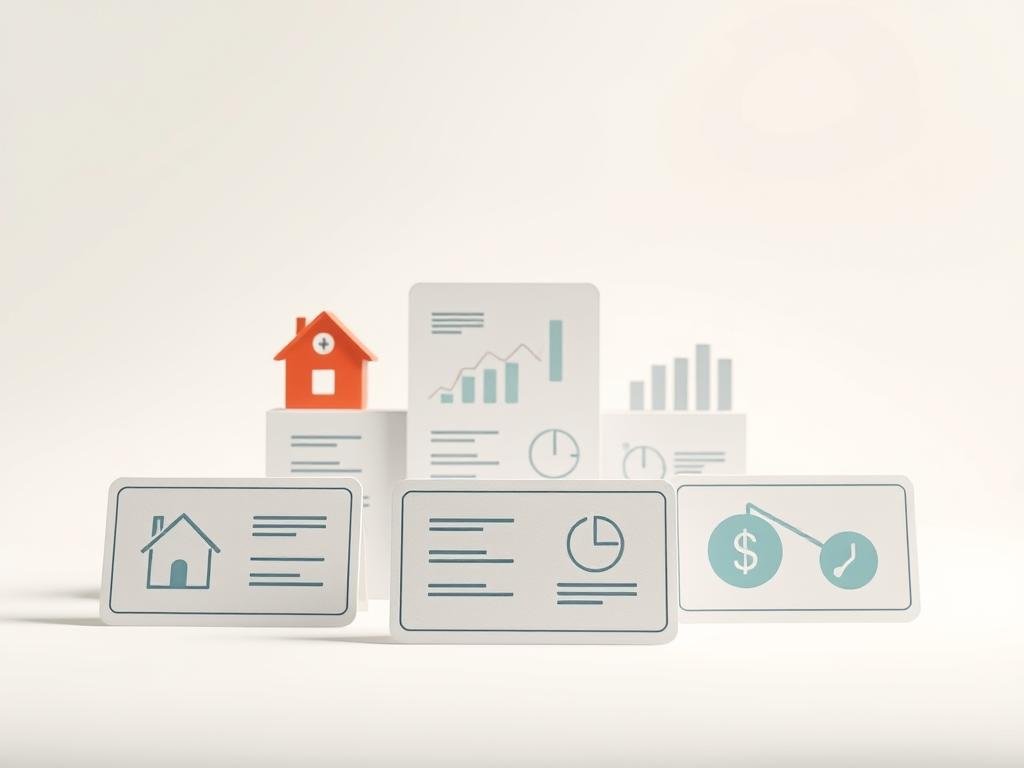You can get fast access to cash when you qualify as an American Express Card Member. The online process shows approval in seconds after you enter the amount and pick a monthly payment option.
If approved, funds may arrive in your bank account in as little as one day. These personal loans use fixed interest rates and set repayment terms to keep your monthly payments predictable.
No origination fees and no prepayment penalties mean fewer surprises when you pay off a loan early. A published example helps you gauge costs: a $10,000 loan at 12.98% APR over 36 months equals about $336.85 per month and a total of $12,123.
This content is informational for U.S. residents and does not replace legal, tax, or financial advice. You should compare products, check rates, and confirm eligibility before you borrow.
Key Takeaways
- Decisions can appear in seconds and funds as soon as one day.
- Fixed rates and terms make monthly payments predictable.
- No origination fees or prepayment penalties reduce extra costs.
- Example: $10,000 at 12.98% APR → ~$336.85/month for 36 months.
- Content is informational for U.S. residents; consult advisors for advice.
What “fast personal financing” with American Express really means
You can move from application to a near-instant decision by selecting an amount and a monthly payment option online. The interface keeps steps simple so you pick numbers, enter basic details, and see a decision within seconds.
Practical speed means funding timelines are clear: if approved, money can be disbursed to your bank as fast as one day. That quick turnaround helps cover urgent purposes like medical bills or car repairs.
Fixed interest rates and fixed repayment terms bring predictability. Your rate and monthly payment won’t shift over the life of the loan, and there are no origination fees and no prepayment penalties, which can lower total cost compared with some other loans.
- Fast decision online: choose amount, pick payment, submit details.
- Funds can arrive quickly, supporting urgent money needs.
- Rates, terms, and approval still depend on your credit and other criteria.
Some parts of the application open a new window for verification and documentation.
User intent for personal-financing-american-express: what you’re trying to accomplish
When speed matters, you can review options and get a decision almost instantly after you submit basic details.
You’ll want a clear path that balances fast approval with predictable costs. Pick an amount, choose a monthly payment, and complete the quick application to see an outcome in seconds.
Approval and the interest you see depend on your creditworthiness and other factors. Make sure you understand how your credit score and current debt levels influence the rate before you commit.
- You’re prioritizing speed, so you’ll want an upfront view of costs.
- Align the loan amount with a monthly payment that keeps your balance manageable.
- Compare quick funding to shopping around for lower rates.
- Prepare documents to improve approval odds—Credit Intel can help with actionable advice.
“Some parts of the application open a new window for verification and documentation.”
If you have questions, focus on timing, fees, and how fast funds reach your account. That helps you move from intent to action with confidence.
Check eligibility and prepare your application the right way
Start by checking a few core numbers so your loan request matches your monthly budget.
Credit score, debt-to-income, and the amount you can responsibly borrow
Lenders look at your credit score and debt-to-income ratio as primary factors. These determine whether you qualify and the interest you might pay.
Set an amount that fits a realistic monthly payment. That keeps new obligations from crowding existing debt.
Information you’ll want on hand before you apply
- Check your recent credit activity and pay down small balances to strengthen your profile.
- Gather personal details, income, housing costs, and bank account info for funding.
- Verify identity documents so names and numbers match—this cuts delays and follow-up questions.
- Confirm the loan purpose and run a quick affordability check so you’ll want fewer surprises when the payment appears.
- Be ready: the application sometimes opens a new window for verification; accurate details speed the seconds‑long decision process.
Make sure your numbers reflect what you can repay comfortably over the chosen term.
Understand the true cost: interest rate, APR, fees, and terms
Before you sign, know how rate, term, and fees shape what you actually pay over time.
Fixed interest rates vs APR: how they differ and why APR matters
The interest rate is the base price of borrowing. APR annualizes that rate and adds certain lender charges so you can compare costs across offers.
Fees snapshot: origination, application, prepayment, and late fees
Check for origination or application fees, late fees, and any prepayment penalty. Small charges can raise total costs, so read disclosures closely.
Note: American Express reports no origination fee and no prepayment penalty on its personal loan product, which can lower overall expense.
Simple vs compound interest and why amortization schedules help you plan
Interest may be simple or compound; more frequent compounding raises what you pay. Use an amortization schedule to see how early payments are interest-heavy and later ones cut principal.
Loan duration trade-offs: monthly payment vs total cost
Longer terms lower monthly payments but usually increase total interest. Shorter terms cost less overall but raise the monthly amount.
- Example benchmark: $10,000 at 12.98% APR for 36 months → $336.85/month and $12,123 total.
- Consider paying extra when allowed; that reduces interest and shortens the term.
- Use a Credit Intel-style breakdown to compare offers apples-to-apples before you accept.
“Total borrowing cost depends on principal, interest rate, and loan term.”
How to apply for an American Express Personal Loan step by step
Begin by picking a loan amount that matches your monthly budget and cash flow needs.
Get a decision in seconds: choosing your amount and payment option
You select the amount you want, then choose a monthly payment that fits your plan. This quick choice frames the proposed rate and term you’ll see on screen.
Enter your details and submit: what the application asks
Complete the online application with identity, income, housing, and banking info. The interface is streamlined so you can finish quickly.
Some steps may open a new window for verification. Keep documents ready so the process stays fast.
From approval to funding: how fast money can reach your bank account
You often get a decision in seconds. If you accept, funds can arrive as fast as one day.
- Confirm bank details to avoid returned transfers.
- Review proposed rates, interest, and repayment before accepting.
- Save copies of your approval and repayment schedule for reference.
“Fixed rates and fixed terms make payments predictable; no origination fee or prepayment penalty reduces extra cost.”
Smart ways to use your loan: from big expenses to debt consolidation
Use a loan strategically—big expenses and debt consolidation demand different approaches. Decide the specific purpose before you accept funds so the loan helps, not hurts, your finances.
Qualified uses typically include home repairs, medical bills, auto repairs, or consolidating high-rate debt. Some lenders restrict business or investment uses, so confirm allowed purposes first.
Paying off credit card debt vs a balance transfer
Consolidating credit card debt with a loan can lower your interest and simplify payments. Your credit score and debt-to-income shape the rate you receive.
Balance transfer cards may offer low or 0% intro APR, but watch for transfer fees, promo expirations, and credit limits that reduce savings.
- Check restrictions: confirm eligible purposes and any fee the lender charges.
- Compare total cost: add fees and interest to see which path saves more money.
- Act fast: if you take funds, pay creditors directly to stop interest from compounding on existing balances.
When to consider other products like credit cards
For short payoffs, cards with intro offers or specific cards may beat a loan. For longer terms, a loan often gives stability with fixed payments and no prepayment penalties.
“Set a repayment plan that prevents reaccumulating balances so consolidation moves you toward becoming debt-free.”
Plan your repayment to protect your credit and minimize costs
Plan how you’ll repay the loan before funds land so your credit stays stable and your overall costs remain predictable.
Budgeting for fixed payments, autopay, and avoiding late fees
Build a budget around the fixed monthly payment so you consistently meet due dates and protect your credit score.
Set up autopay to lower the chance of missed payments and possible late fees, but keep an eye on your account so you don’t overdraft.
Schedule reminders a few days before each due date and leave a small cushion in your budget for unexpected expenses.
Repayment example to illustrate total costs and monthly payments
Use the $10,000 American Express loan example repaid over 36 months at 12.98% APR to see how amount, term, and interest shape costs.
That scenario yields a $336.85 monthly payment and a $12,123 total cost. Because the loan has fixed interest rates and fixed repayment terms with no prepayment penalty, small extra principal payments lower total interest and shorten the term.
- Track progress using an amortization schedule to watch interest decline and principal grow.
- Review your loan terms so you know payment application order, grace periods, and how to direct extra payments to principal.
- Reassess your budget if income or expenses change and monitor your credit score as on-time payments can help it improve.
“On-time repayment protects credit and reduces long-term costs.”
Compare alternatives before you commit
Before you commit, run a quick side‑by‑side comparison of options to see which structure fits your timeline and risk tolerance. This helps you weigh true cost, speed, and long‑term impact on your finances.

Unsecured vs secured personal loans: risk, rates, and approval odds
Unsecured loans rely on your credit profile and usually avoid collateral. They may carry higher interest but protect assets.
Secured loans, such as home equity, often offer lower rates and larger limits but put property at risk if you default.
Balance transfer cards: promo rates, fees, and gotchas
Balance transfer offers can cut interest with an intro window. Check transfer fees, promo length, and the post‑promo interest rate.
If you can’t clear the balance inside the promo, the higher rate may erase early savings.
Marketplace, banks, credit unions, and fintech: where to look for loans
Compare banks, credit unions, fintech lenders, and marketplaces that aggregate offers. Fintechs held about 14% of U.S. personal lending by 2022, showing online options matter.
- Compare interest rates, origination fees, approval odds, and repayment terms.
- Use prequalification tools to view estimated rates with less impact on credit.
- Weigh an American Express option against alternatives for speed, price, and features.
“Compare rates and fees side‑by‑side and project total cost through payoff.”
Conclusion
Close your evaluation by making sure the loan’s price and pace fit your financial plan. Check the proposed amount, rate, and any fees so the monthly payment stays manageable. Use the $10,000 sample ($336.85/month at 12.98% APR → $12,123 total) as a benchmark when you compare offers.
Compare loans and products, watch for an origination fee elsewhere, and weigh balance options like credit cards or transfers when speed meets cost concerns. Check your credit, set a budget, and pick a repayment plan that keeps interest and costs low.
Finally, this content is for U.S. residents and is not intended to provide legal, tax, or financial advice. Consult a pro for tax or financial questions and use tools like credit intel to confirm choices before you borrow.


